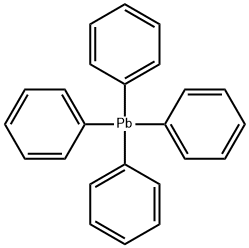LEAD TITANIUM OXIDE
- CAS NO.:12060-00-3
- Empirical Formula: O3PbTi
- Molecular Weight: 303.07
- MDL number: MFCD00011159
- EINECS: 235-038-9
- SAFETY DATA SHEET (SDS)
- Update Date: 2025-01-27 09:38:02

What is LEAD TITANIUM OXIDE?
Chemical properties
yellow tetr crystal(s) <490°C, cub >490°C; can be made by calcination of stoichiometric amounts of PbO and TiO2 at 400°C; also prepared by precipitation from aqueous solution of lead nitrate, titanium tetrachloride, and ammonium hydroxide, followed by calcining at 900°C; has been used as a paint pigment; and in 99.9% purity as a sputtering target for thin film capacitors [KIR78] [KIR83] [STR93] [CER91] [SAF87]
The Uses of LEAD TITANIUM OXIDE
Lead titanate (lead metatitanate), PbTiO3, forms yellow tetragonal crystals below 490 °C and cubic crystals above 490 °C. It is insoluble in water. In hydrochloric acid, lead titanate decomposes into PbCl2 and TiO2. It can be formed by calcining an equimolecular mixture of lead monoxide and titanium dioxide and has been used in surface coatings as a pigment in outdoor paints, as a component of ceramic electrical insulators, in ceramic ferroelectric-piezoelectric compositions, in ceramic electrical capacitors, in ceramic glazes, in transducers, in low melting glass sealants, and in oxidation catalysts for manufacturing acrylonitrile from propylene and nitrous oxide.
The Uses of LEAD TITANIUM OXIDE
Lead(II) titanium oxide is widely used in ceramic capacitor, ceramic filters, PTC thermal resistor, pressure sensitive resistor and the performance of transducer field.
Flammability and Explosibility
Non flammable
Properties of LEAD TITANIUM OXIDE
| Density | 7.52 g/mL at 25 °C(lit.) |
| refractive index | 2.66 |
| Flash point: | 12°(54°F) |
| solubility | Soluble in alcohols |
| form | powder |
| Specific Gravity | 7.52 |
| color | Yellow |
| Water Solubility | Insoluble in water. |
| Sensitive | Moisture Sensitive |
| CAS DataBase Reference | 12060-00-3(CAS DataBase Reference) |
| EPA Substance Registry System | Lead titanium oxide (PbTiO3) (12060-00-3) |
Safety information for LEAD TITANIUM OXIDE
| Signal word | Danger |
| Pictogram(s) |
 Exclamation Mark Irritant GHS07  Health Hazard GHS08  Environment GHS09 |
| GHS Hazard Statements |
H373:Specific target organ toxicity, repeated exposure H410:Hazardous to the aquatic environment, long-term hazard |
| Precautionary Statement Codes |
P202:Do not handle until all safety precautions have been read and understood. P260:Do not breathe dust/fume/gas/mist/vapours/spray. P273:Avoid release to the environment. P301+P312:IF SWALLOWED: call a POISON CENTER or doctor/physician IF you feel unwell. P308+P313:IF exposed or concerned: Get medical advice/attention. |
Computed Descriptors for LEAD TITANIUM OXIDE
New Products
4,4-Difluoropiperidine hydrochloride tert-butyl 9-methoxy-3-azaspiro[5.5]undecane-3-carboxylate Indole Methyl Resin N-Isopropylurea N,N-Dicyclohexylcarbodiimide(DCC) MELDRUMS ACID 5-METHYLISOXAZOLE-4-CARBOXYLIC ACID Magnessium Bis glycinate Zinc ascorbate 1-bromo-2-butyne 2-acetamidophenol 9(10H)-anthracenone Erythrosin B, 4-Piperidinopiperidine 2-((4-morpholinophenylamino) (methylthio) methylene) malononitrile 2,4-dihydroxybenzaldehyde 3-(4-morpholinophenylamino)-5-amino-1H-pyrazole-4-carbonitrile Methyl 2-methylquinoline-6-carboxylate 2,6-dichloro-4-nitropyridine 4-Bromo-2-chlorobenzonitrile 2-(benzylamino)acetic acid hydrochloride 4-(tert-Butoxycarbonylamino)but- 2-ynoic acid 3,4-dihydro-2H-benzo[b][1,4]dioxepine 1-Phenyl-1-cycloprppanecarboxylicacidRelated products of tetrahydrofuran








You may like
-
 Lead(II) titanium oxide CAS 12060-00-3View Details
Lead(II) titanium oxide CAS 12060-00-3View Details
12060-00-3 -
 Lead(II) titanium oxide CAS 12060-00-3View Details
Lead(II) titanium oxide CAS 12060-00-3View Details
12060-00-3 -
 Lead(II) titanium oxide CAS 12060-00-3View Details
Lead(II) titanium oxide CAS 12060-00-3View Details
12060-00-3 -
 Lead(II) titanium oxide CAS 12060-00-3View Details
Lead(II) titanium oxide CAS 12060-00-3View Details
12060-00-3 -
 Lead(II) titanium oxide CAS 12060-00-3View Details
Lead(II) titanium oxide CAS 12060-00-3View Details
12060-00-3 -
 Lead(II) titanate CAS 12060-00-3View Details
Lead(II) titanate CAS 12060-00-3View Details
12060-00-3 -
 20677-73-0 (2,2-diethoxyethyl)methylamine 98%View Details
20677-73-0 (2,2-diethoxyethyl)methylamine 98%View Details
20677-73-0 -
 3-(4-(hydroxyamino)-1-oxoisoindolin-2-yl)piperidine-2,6-dione 98%View Details
3-(4-(hydroxyamino)-1-oxoisoindolin-2-yl)piperidine-2,6-dione 98%View Details
